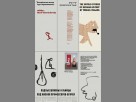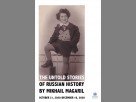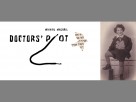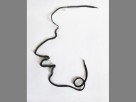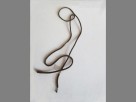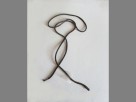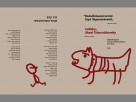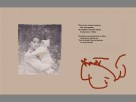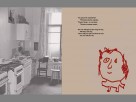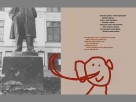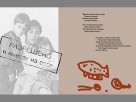Mikhail Magaril
The exhibition is part of a long-term collaboration between the Harriman Institute and the Russian-American Cultural Center (RACC) for the presentation of Russian immigrant artists in New York.
Mikhail Magaril, who specializes in the artist’s handmade book, firmly believes that every person, especially artist, is a living capsule of time, preserving unique experience and viewpoint, waiting to be discovered and passed on to the world.
The exhibition consists of twenty-four graphic works on paper and collages from the series associated with his hand-made books the Doctors' Plot and Lullaby. The episode described in the Doctors' Plot story was witnessed by the author as a young child in Leningrad in 1952. During this time in the Soviet Union, an anti-Semitic crusade known as "The Doctors' Plot" took place during which prominent Jewish physicians were falsely accused of conspiring to assassinate the Soviet party leaders.
The Lullaby of Shaul Chernikhovsky, a Russian Hebrew poet, written in Hebrew in 1897, was discovered by Magaril and served as the inspiration for a series of collages. Combining photographs from his childhood, such as a communal kitchen or the shabby dilapidated backyard of the house he and his family lived in, with graphic drawings depicting a child full of childlike innocence and curiosity, evoking an excruciating sense of fear and danger to life in a totalitarian society after the recent genocidal war.
At the opening event, in addition to the exhibited works, original artist's books will be on display and the artist will engage in a dialogue with his friend Michael Weintraub, connoisseur in rare books and works on paper.
The exhibition will also be linked to the RACC program dedicated to the 100th anniversary of UNOVIS (Affirmers of New Art), a group of teachers and students of the Vitebsk Art School, created under leadership of Kazimir Malevich to explore new ideas and theories in art, experiment with collective creativity and build a new system of teaching the avant-garde art that preceded the Bauhaus. The group included El Lissitzky, Nina Kogan, Vera Ermolaeva, Lazar Khidekel, Ilya Chashnik and Evgenia Magaril, one of the female members of Unovis and a student of Malevich. Mikhail Magaril was brought up as an artist in this tradition, which he received first-hand from Evgenia Markovna Magaril.
Despite the fact that in the Soviet Union Suprematism was considered alien to socialist ideas, was rejected by the authorities and was removed from the main narrative for decades, the tradition was passed on to future generations and reflected not only in a bold artistic style, but also in a spirit of rebellion and a constant search for meaningful topics and ways of expression.
Mikhail Magarill emigrated from the Soviet Union over 30 years ago. He became an eminently accomplished book artist and, paradoxically, a book with almost no text. This radical departure from his previous work, far from arbitrary exploration of new directions, represents the culmination of his career and is the result of his thoughtful reflection on the formative experience of his worldview, namely his life in the post dystopia of the Stalinist Soviet Union.
